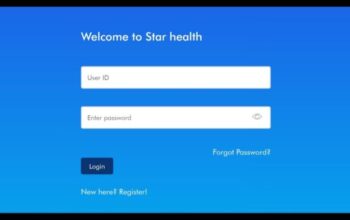
There is no doubt that the global COVID-19 pandemic sent the use of online healthcare through the roof. Remote delivery of health services has been a growing industry since the advent of widespread internet use. However, during lockdowns, patients and providers were forced to turn to technology for healthcare delivery.
As with nearly everything else in life during the pandemic, healthcare had to pivot quickly. Moreover, providers were forced to transition to online delivery when hospitals were swamped with sick and dying patients. Clinicians had to figure out how to treat patients most susceptible to the disease while maintaining a safe distance.
As tremendous as the role it played, the pandemic isn’t the only factor leading to the rise of online healthcare. In fact, without these three factors, healthcare delivery during the height of the pandemic might have been far less effective.
1. Disruptive Healthcare Innovations
Disruptive healthcare innovations comprise all those new things that interrupted the practice of conventional medicine. There have been many technological advancements in recent years. That is why this factor probably accounts for most of the rapid growth in online healthcare.
Telemedicine, apps, wearables, and the Internet of Things (IoT) have reshaped the concept of an office visit. Now it’s simple to consult virtually with a physician and get your birth control online without leaving your sofa. In fact, your prescription will just show up at your front door, saving a visit to the pharmacy as well.
Wearables and other electronic monitoring devices allow patients to track their own health. Devices measure such things as blood pressure, blood oxygen, glucose, and heart function. Even better, they can transmit the data to their doctors who use them to diagnose and monitor patient health conditions.
Artificial intelligence (AI) continues to hasten online healthcare growth by allowing patients to access information without a doctor. On the patient side, intuitive chatbots provide immediate answers to questions. On the provider side, qualitative data is collected, analyzed, and used to improve patient outcomes.
Part of what made these remote healthcare options viable is another disruptive healthcare innovation, blockchain. Using encryption and other digital security methods, blockchain protects patient privacy. It plays a vital role in an all-access digital world.
The disruptive nature of a global pandemic may have helped spur the use of online healthcare. But without disruptive healthcare innovations, talking to a doctor during lockdown might have merely jammed the landlines.
2. Access to Providers
Long before the onset of the pandemic, online healthcare was filling gaping holes in provider access for certain populations. In rural areas and other underserved communities, it was a godsend. The elderly and disabled also benefited immensely.
For example, in 2015, teleradiology was an expanding service, promoting reduced costs and improved access for patients at rural hospitals. At the heart of the struggle for these hospitals was their inability to recruit radiologists. Specialists who could accept living the country life couldn’t get past the low pay.
There is a severe shortage of hospitals and clinics in rural communities. Some patients may live hours away from any healthcare provider. In those locations, online healthcare is a literal lifesaver.
Even in areas of the country not suffering from this shortage, the elderly, disabled, and poor have difficulty with transportation. That’s a problem when you consider that 56% of all healthcare dollars are spent by patients ages 55 and older.
The need for these populations to access online healthcare has contributed to its rise in use. But there is another access issue many of these same populations face as well. There’s also a lack of access to the internet, due to insufficient infrastructure or costs they can’t afford to pay.
Fortunately, the pandemic shone a brutally bright light on gaps in that internet infrastructure in healthcare and in education. As concerted efforts are focused on connecting the unconnected, growth in online healthcare will continue its meteoric rise. Perhaps someday, there will no longer be a disconnect.
3. Normalization of Online Healthcare
Change is eternally difficult. The relationship between provider and patient has remained largely unchanged since the advent of modern medicine. With that history, it’s no wonder that everyone found the initial foray into remote interaction a little disconcerting.
Without the pandemic, many patients, doctors, nurses, therapists, and other healthcare professionals might never have tried online healthcare. The need to maintain distance in such a hands-on relationship forced many to use it. They may have done it somewhere down the road anyway, but urgency can supplant complacency with speed.
Patients forced to reveal symptoms from dining rooms instead of the confines of the exam room became more comfortable. Providers started using those disruptive technologies and found themselves adapting to them.
They weren’t the only ones adjusting to an emerging new normal even before the pandemic. Insurers, panicking about how to reimburse providers, also figured it out. The American Medical Association built new CPT codes for billing online visits and, once adopted by Medicare, they became the norm.
Older adults who struggled with using no-frills cell phones started logging onto Zoom or using Facetime to see their grandchildren. They never imagined that talking to the doctor over a screen à la The Jetsons would happen in their lifetime.
Online healthcare isn’t the new normal for everything. Patients and surgeons still must be physically together in an operating room. But acceptance and use by growing numbers of people will dull the shine on the “new” part of that normal.
Ever since people figured out how to log onto the internet, they were Googling symptoms to diagnose themselves. That can be a frightening and dangerous activity. And although individual access to the wealth of health information online is useful, it doesn’t constitute online healthcare.
Online healthcare requires the interaction between patient and provider, even if it’s done virtually. While technology, access, and normalization have contributed to its growth, it hasn’t arrived. Patients and providers will keep demanding access to more services and improvement in the quality of their interactions.
Long after COVID-19 becomes as endemic as seasonal influenza, online healthcare will continue to grow. The Jetsons’ flying cars may still be years from reality. But the age of seeing your doctor on a screen and finding your prescription at the door has arrived.


